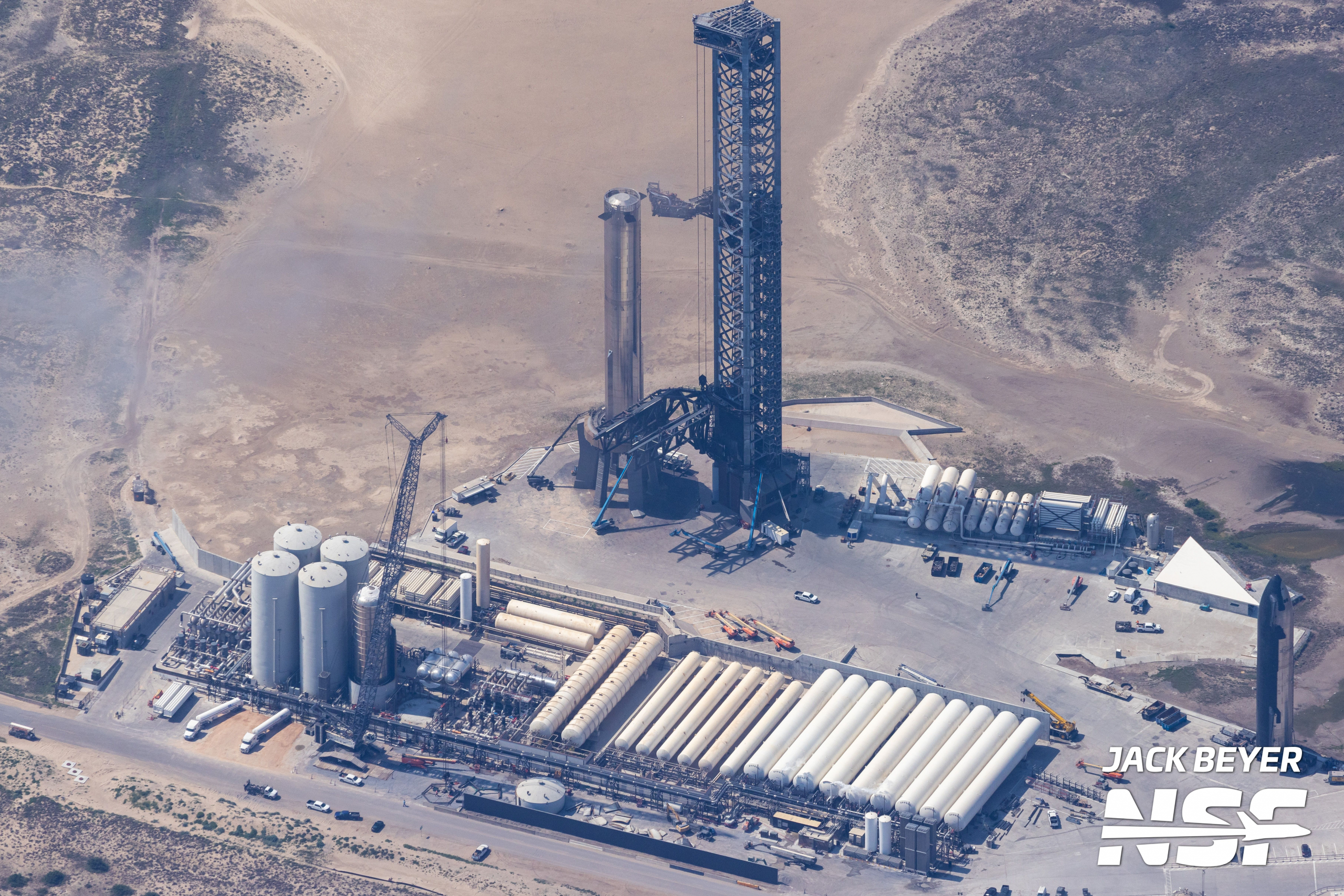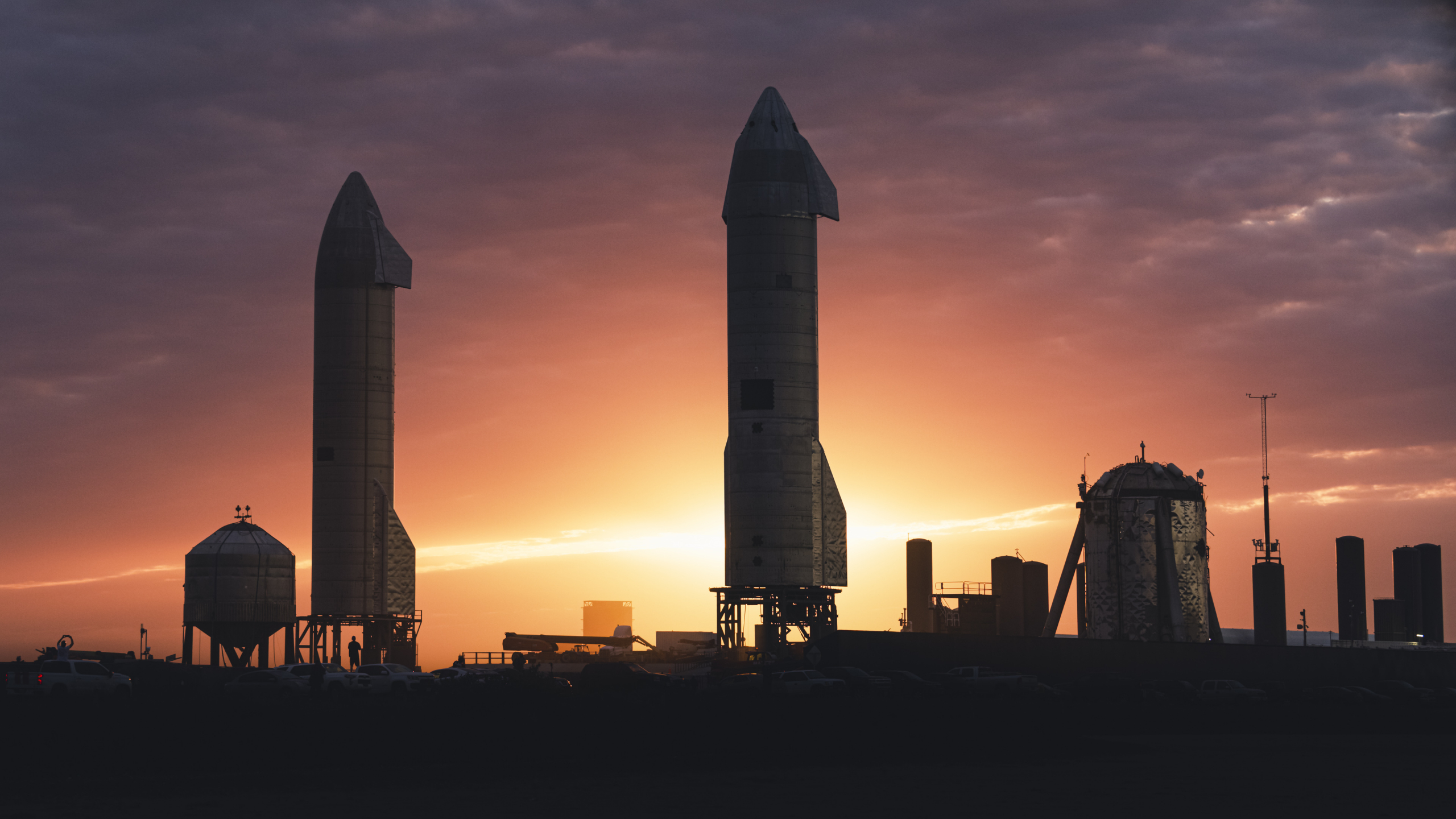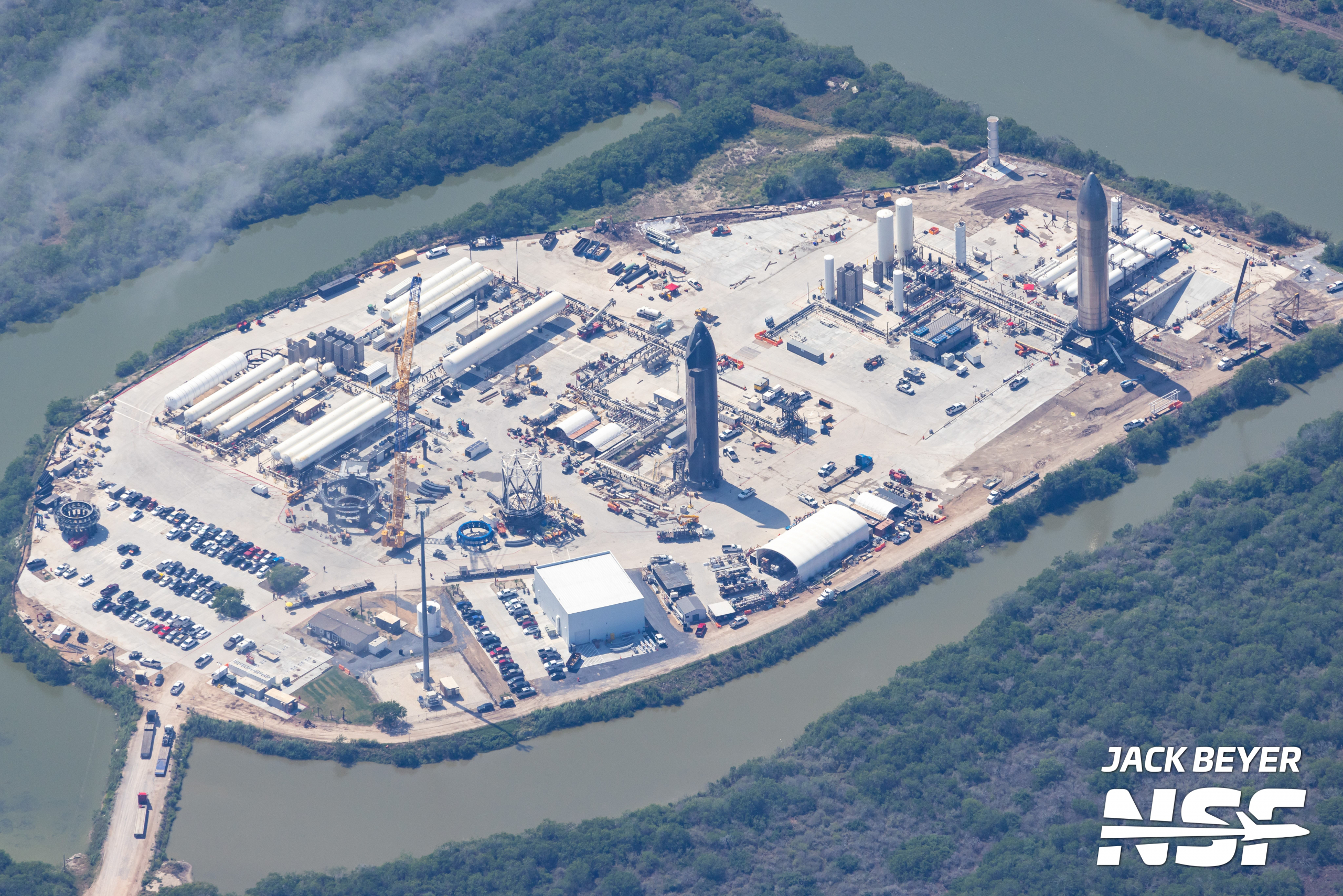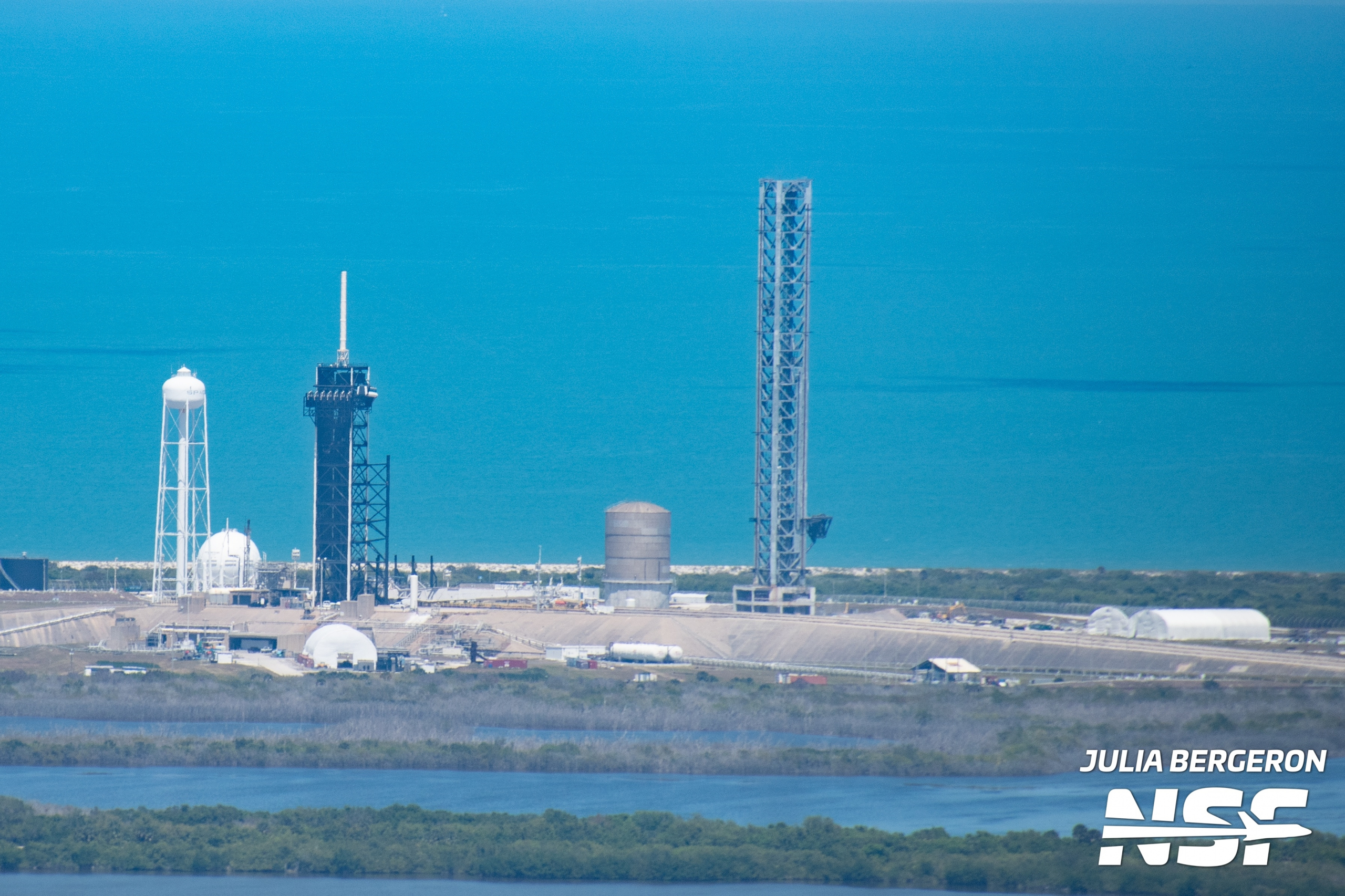SpaceX is preparing for Flight 4. The start of full testing on Thursday resulted in a partial loading of propellants, which will be followed by a full rehaul of Wet Dress in the coming days. Alongside preparations for the next flight, SpaceX is making progress on its future ambitions with a second tower in the works at Starbase, while information has been revealed about SpaceX’s Starship 39A platform in Florida.
Wet dress rehearsal for Vol 4
SpaceX deployed both vehicles for Starship Flight 4 and stacked them on the Orbital Launch Rack (OLM) before full testing. So far, Booster 11 and Ship 29 have completed their individual test campaigns and completed a partial load test on May 16, with the possibility of a wet dress rehearsal (WDR) as early as Saturday, May 18.
A WDR is when the vehicle is fully loaded with propellant and subjected to a simulated launch countdown for testing purposes. For Starship, this means charging all tanks to flight levels with liquid methane (LCH4) and liquid oxygen (LOX).
Starship Flight 4’s full tanking test (partial/mini-WDR – wet dress rehearsal) appears to have gone well. Partial loading completed and now unsealing.https://t.co/kqHZKqqN5Y pic.twitter.com/XCOqhjY5Zt
– Chris Bergin – NSF (@NASASpaceflight) May 16, 2024
SpaceX has conducted a WDR for each of the Starship’s first three flights so far, with constant changes in the Orbital Launch Pad (OLP) between each flight. Between Flight 3 and Flight 4, SpaceX completely switched to horizontal liquid nitrogen (LN2) and LOX tanks and has already started vacuuming perlite into the older vertical LOX tanks. As a result of these changes, SpaceX is expected to test the operation of the orbital tank farm using the new lines and tanks in a launch configuration before actual launch day.
As a result of these changes, SpaceX is expected to test the operation of the orbital tank farm using the new lines and tanks in a launch configuration before actual launch day.
Teams will also want to test the pressurization configuration of the tanks when loading into a set of vehicles rather than simply venting out of the Orbital Launch Media (OLM) and Orbital Launch Integration Tower (OLIT).

Orbital Launch Pad A (Credit: Jack Beyer for NSF)
SpaceX performed a partial load test before moving to a full WDR to help verify the systems with vehicles on the platform before fully loading methane and LOX into the stack.
Documents, such as the Maritime Safety Information Bulletin, warn ships to avoid the area around the PLO. This currently projects a full WDR on Saturday.
Once the WDR is complete, SpaceX will most likely move Starship 29 back as there is still work to be done on its heat shield. SpaceX may also take the opportunity to inspect the vehicle for any potential common issues related to the anomaly with Ship 31 at Masseys.

Ship 29 stacked on Booster 11 (Credit: Mary/BocaChicaGal)
Ship 30 and goodbye Pad B
Since its deployment last week, Ship 30 has completed a small cryogenic test, an aborted static fire, and a six-engine static fire. This makes Ship 30 the first orbital-class ship to skip a spin primer or pre-burner before a static fire. SpaceX may be comfortable with this because Ship 30 has had its engines installed on the new enclosed working rack.
With these new mounts, SpaceX can control the environment in which the engines are installed and prevent foreign object debris (FOD) from entering pipes and connections. These also allow crews to use specific tools to install motors, making installation more precise and safer.
Ship 30 will not conduct static firing on a single engine, like Ship 28 and Ship 29, as it has already been removed from Pad B and returned to High Bay.
Ship 30 was positioned in the High Bay Tiling Station before moving to the rear of the bay. However, crews will have to spend several weeks repairing its heat shield, as SpaceX wants to ensure this ship has the best chance of successful re-entry.
With this engine test campaign complete and Suborbital Pad B already almost complete, this marks the end of the Suborbital side of the launch site.
The tank farm and its two platforms have played a critical role in the current state of the Starship program, helping to fly Starhopper and all early SN prototypes, culminating in a successful landing of SN15.

(Starhopper, SN7.2, SN9 and SN10 sitting at the launch site. Credit: SpaceX)
The site was then transferred to cryogenic testing and static fire testing for orbital class ships, which ended with Ship 30. On the bright side, Suborbital Basement B will be upgraded to sub -orbital ground B, which will advance the Starship program.
Massey
SpaceX has been rapidly constructing a new static fire rack and flame trench at Masseys over the past few months.
Ship 26 was recently placed on the new mobile rack and rolled over the new flame trench to perform fit checks and possibly cryogenic testing. SpaceX uses Ship 26 rather than a flying vehicle, so if something were to break, there would be no impact on the flight program.

Masseys test site (Credit: Jack Beyer for NSF)
Along with ship 26, ship 31 is also at Masseys to carry out its cryogenic tests. The other half of Ship 31, which is believed to be Booster 13, recently completed its own cryogenic testing and is expected to begin installing engines in Mega Bay 1. These two vehicles are expected to fly on Flight 6, which cannot -not be far away.
Ship 31 suffered an anomaly while conducting a cryogenic test at Masseys to verify tank construction. Several flashes of light and smoke were on the rocket’s ascending raceway. The raceway is where all the data and electrical lines go from the engine section to the avionics in the cargo bay right next to the forward dome.
Ship 31 appears to have encountered a problem during its cryogenic testing at Masseys.https://t.co/e3xbqPnwZ5 pic.twitter.com/mTBhutWEX1
– Chris Bergin – NSF (@NASASpaceflight) May 13, 2024
It was most likely an electrical short that caused an electrical arc, which damaged Ship 31’s raceway. SpaceX has since brought this vehicle back to High Bay and will be conducting inspections to see if any other systems on board were damaged. If SpaceX suspects this might be a problem with other ships, teams will conduct inspections; however, this could be an isolated incident.
Orbital Launch Platform B
SpaceX continues to make progress on Orbital Platform B, with more stakes installed and teams already beginning to dismantle Suborbital Platform B and the suborbital tank farm itself. A new development is that SpaceX intends to roll all five sections of the Brownsville Harbor Tower to Sanchez. In fact, the teams have already rolled section (X) towards Sanchez.
Deployment closures for these moves are from 10 p.m. to 2 a.m. on May 13, 15, 17, 19 and 20. Once these tower sections are at the Sanchez site, SpaceX will begin adding any cryogenic lines and other internals that can be added before the sections are stacked.
Crews have already rolled Section 7 to the Sanchez site with Sections 1, 2, 3 and 6 at the Brownsville Harbor, Sections 8 and 9 at the Sanchez site, and Sections 4 and 5 still at Roberts Road at Cape Canaveral.

Orbital Launch Pad B (Credit: Jack Beyer for NSF)
According to an FAA document regarding the Starbase Integration Tower 2 proposal, the tower is to be located within the square of piles that were drilled in the image above.
Environmental impact study of the LC-39A vessel
SpaceX has requested a revised Environmental Impact Statement (EIS) regarding spacecraft operations at LC-39A. The FAA and SpaceX previously completed an EIS in 2019. However, the Starship program has changed so much since then, with changes to the launch pad and vehicles, that SpaceX must conduct another EIS to carry out Starship operations on LC-39A.
An EIA is a study of the environmental impacts that a system will have on the environment around it, such as sound waves, pollution, threats to wildlife, and many other factors considered in these reports. Gathering all of this data typically takes over a year or more to study the environment of the proposed action and its potential impacts.

Environmental Impact Study Proposal LC-39A (Credit: faa.gov)
The action proposed in this EIS would give SpaceX an operator license to fly the Starship from the LC-39A, based on the scope of the proposed action. This proposed action includes all Starship program infrastructure improvements and operations and includes those identified in the 2019 EA for Starship.
SpaceX has requested up to 44 Starship launches per year, which can take place during the day or night. These launches would include a Starship or Booster landing at the launch site, a downstream landing on a droneship, or use in the Atlantic Ocean. With these Starship operations, SpaceX would also continue Falcon 9 and Falcon Heavy operations alongside the LC-39A.

Work on the LC-39A with Starship Pad in progress (Credit: Julia Bergeron for NSF/L2)
Although infrastructure improvements are consistent with the 2019 EA already under construction, SpaceX proposed additional improvements to the LC-39A in this EIS. These include on-site propellant production and storage and a flood for the launch pad. Propellant production would include things like air separation, as was seen at the Sanchez site before SpaceX demolished it.
Along with the proposed action, there is an alternative action based on this EIS that can provide National Aeronautics and Space Administration (NASA) and commercial partners with access to Starship, which is a critical pathway to NASA’s Artemis program . Given these reasons, the only alternative according to the proposal would be one of no action. Under this alternative, SpaceX would not receive a vehicle operator’s license and additional upgrades to the LC-39A would not proceed.
Overall, this means that SpaceX will have to wait to launch from the LC-39A until this EIS is completed and it receives a vehicle operator license. This is not a bad thing; Once this is complete, SpaceX will have a much stronger presence and infrastructure on the LC-39A platform for Starship launches in the future.
Featured image: Ship 29 stacked on Booster 11 for the first time (Credit: Jack Beyer for NSF)
